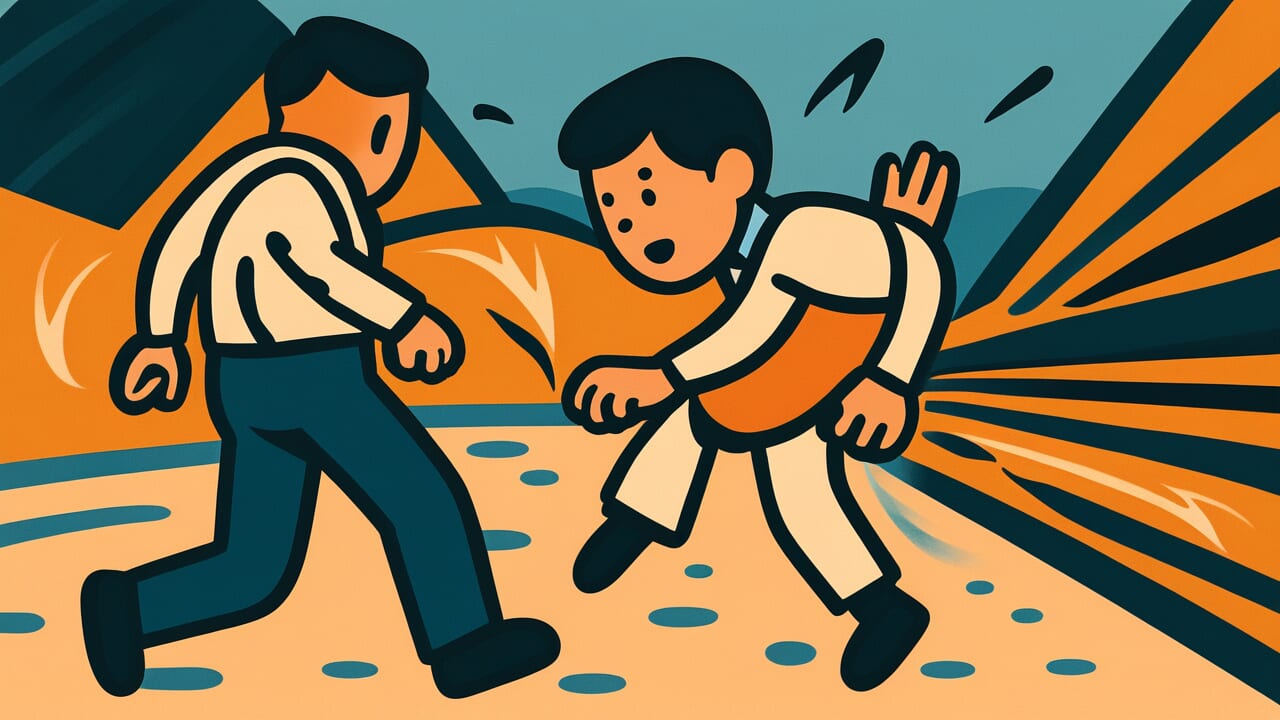How to Read “live fast, die young”
“Live fast, die young”
[LIV fast, DIE yuhng]
All words are common and easy to pronounce.
Meaning of “live fast, die young”
Simply put, this proverb means that living recklessly and dangerously often leads to an early death or wasted potential.
The literal words paint a clear picture. “Live fast” means rushing through life without caution. It suggests taking big risks and ignoring consequences. “Die young” is the tragic result of such choices. Together, they warn that reckless behavior cuts life short.
This saying applies to many situations today. Someone might use it when discussing dangerous hobbies like extreme sports. It also fits conversations about unhealthy lifestyles involving drugs or alcohol. People say it when warning friends about risky decisions. The phrase captures how short-term thrills can lead to long-term problems.
What’s striking about this wisdom is its blunt honesty. Most proverbs offer gentle guidance, but this one delivers a harsh warning. It forces people to think about consequences before acting. The phrase reminds us that our choices today shape our tomorrow. It’s particularly relevant for young people facing peer pressure and tempting but dangerous opportunities.
Origin and Etymology
The exact origin of this phrase is unknown, though it gained popularity in the 20th century. It became widely recognized through music and popular culture. The saying reflects attitudes that emerged during times of social change and rebellion.
This type of warning developed during periods when young people faced new freedoms and dangers. Urban life brought both opportunities and risks that rural communities rarely saw. The phrase captured concerns about youth making dangerous choices without understanding the consequences. It expressed older generations’ fears about changing social values.
The saying spread through various forms of media and entertainment. Musicians and writers used it to describe certain lifestyles and attitudes. It became associated with rock and roll culture and rebellious youth movements. Over time, the phrase moved from describing specific subcultures to becoming general wisdom about risky behavior.
Interesting Facts
The phrase uses a simple but powerful contrast between speed and finality. “Fast” and “young” both suggest energy and potential, while “die” represents the ultimate loss. This creates dramatic tension that makes the saying memorable.
The structure follows a cause-and-effect pattern common in warning proverbs. The first part describes the behavior, and the second part reveals the consequence. This format helps people remember both the action and its result.
Usage Examples
- Parent to teenager: “You’re partying every night and skipping school completely – live fast, die young.”
- Coach to athlete: “He’s training six hours daily without any rest days – live fast, die young.”
Universal Wisdom
This proverb reveals a fundamental tension in human nature between immediate gratification and long-term survival. Our brains are wired to seek pleasure and avoid pain in the moment. This served our ancestors well when facing immediate threats. However, modern life requires us to consider distant consequences that our instincts often ignore.
The saying exposes how youth and inexperience can become dangerous combinations. Young people naturally feel invincible because they haven’t experienced major losses or failures yet. Their brains are still developing the ability to weigh future risks against present rewards. This biological reality makes the warning especially relevant. Every generation must learn these lessons, often through painful experience rather than wise guidance.
The deeper truth here involves the paradox of living fully versus living safely. Humans need some risk-taking to grow and discover their potential. Complete safety leads to a limited, unfulfilling existence. Yet excessive risk-taking destroys the very life we’re trying to enhance. This proverb emerged because people observed this pattern repeatedly throughout history. Those who pushed boundaries too far often paid the ultimate price, while their stories served as warnings for others.
When AI Hears This
Humans create stories where dying young seems more heroic than living long. We celebrate brief, intense lives as if they’re more complete. A rock star who dies at 27 feels legendary. An artist who lives to 80 seems ordinary. This happens because we mistake dramatic endings for meaningful lives.
This pattern reveals how humans confuse story structure with real value. We think like movie watchers, not life livers. Short, dramatic arcs feel more important than long, steady ones. We unconsciously believe that suffering or early death proves someone lived authentically. This makes us overlook the quiet beauty of extended existence.
What fascinates me is how this bias actually serves humans well. You need myths of heroic sacrifice to inspire courage. Someone must risk everything for progress to happen. The “live fast” stories motivate others to push boundaries. Meanwhile, most people quietly choose the long path. This creates perfect balance between necessary risk-takers and stable society builders.
Lessons for Today
Understanding this wisdom means recognizing the difference between calculated risks and reckless behavior. Smart risk-taking involves weighing potential benefits against possible costs. It means preparing for failure while hoping for success. Reckless behavior ignores consequences entirely, focusing only on immediate thrills or gains.
In relationships, this wisdom applies to how we treat others and ourselves. Moving too fast in romantic relationships can lead to heartbreak or poor decisions. In friendships, peer pressure might encourage dangerous activities that seem exciting but carry serious risks. The key is learning to pause and consider whether short-term excitement is worth potential long-term damage.
Communities benefit when members understand this balance between adventure and caution. Societies need people willing to take risks and push boundaries. Innovation and progress require some level of danger and uncertainty. However, communities also need people who think carefully about consequences and protect others from unnecessary harm. The wisdom isn’t about avoiding all risks, but about choosing them wisely. Living fully doesn’t require living recklessly, and a long life can still be an exciting one.



Comments